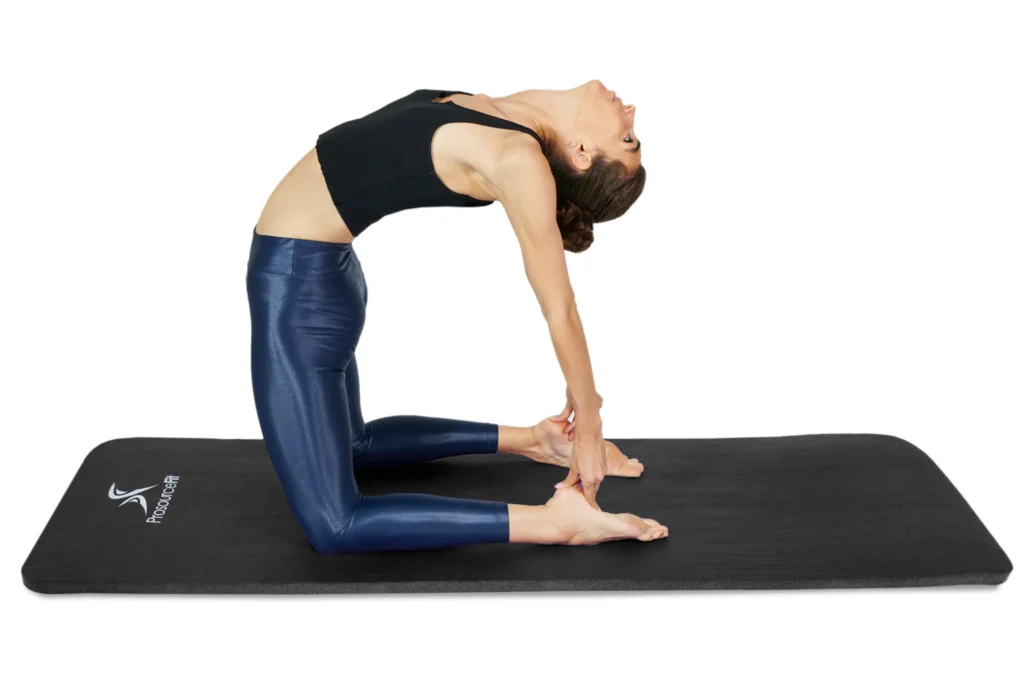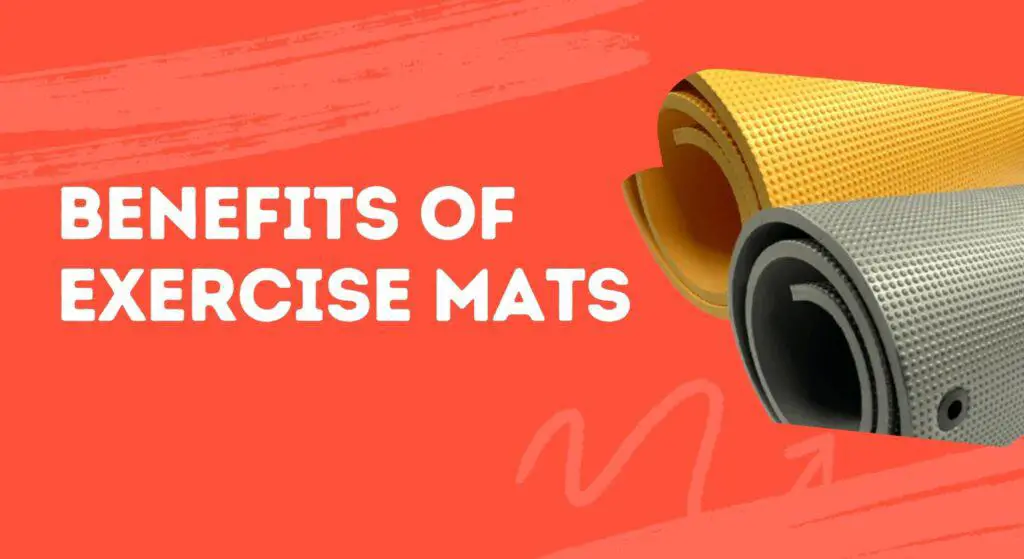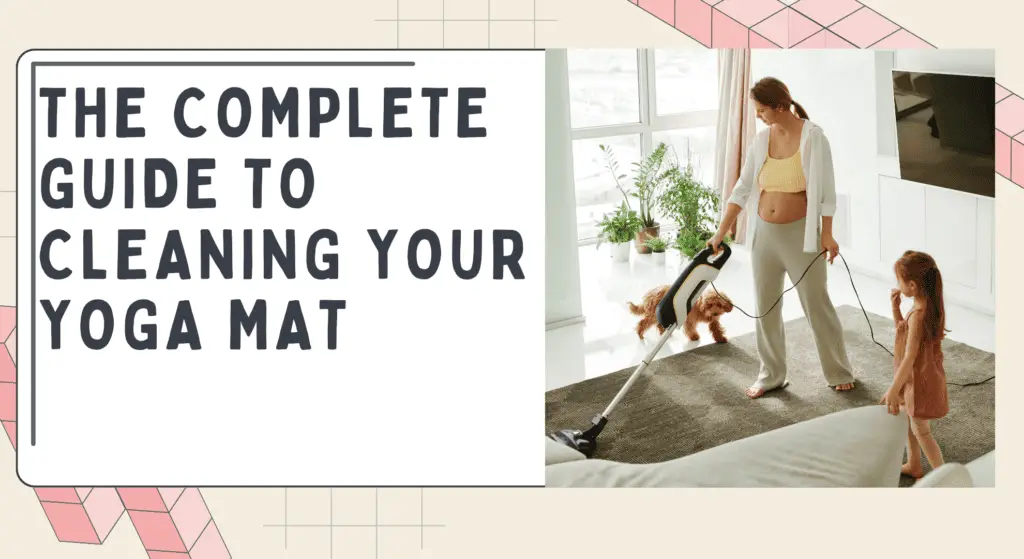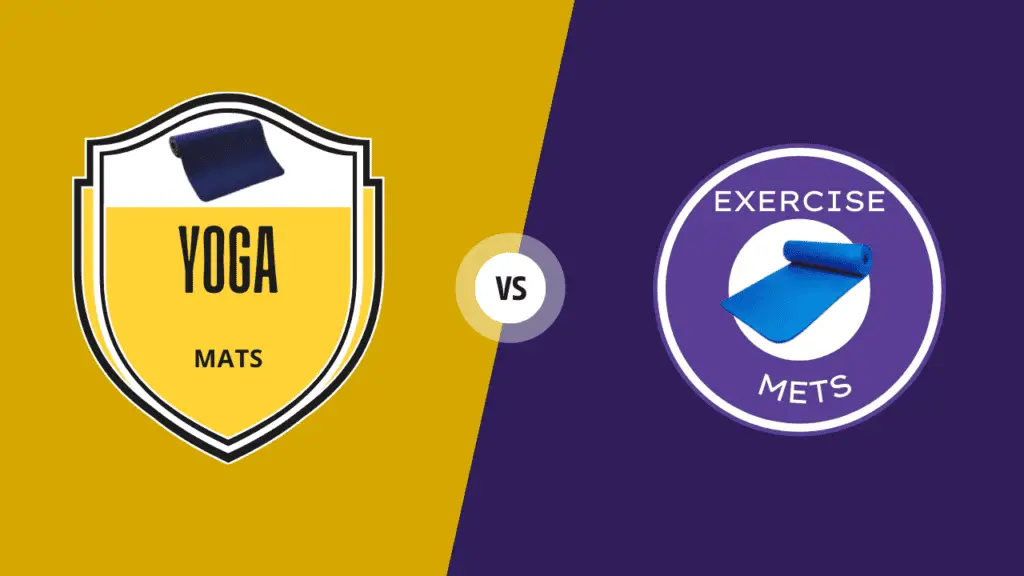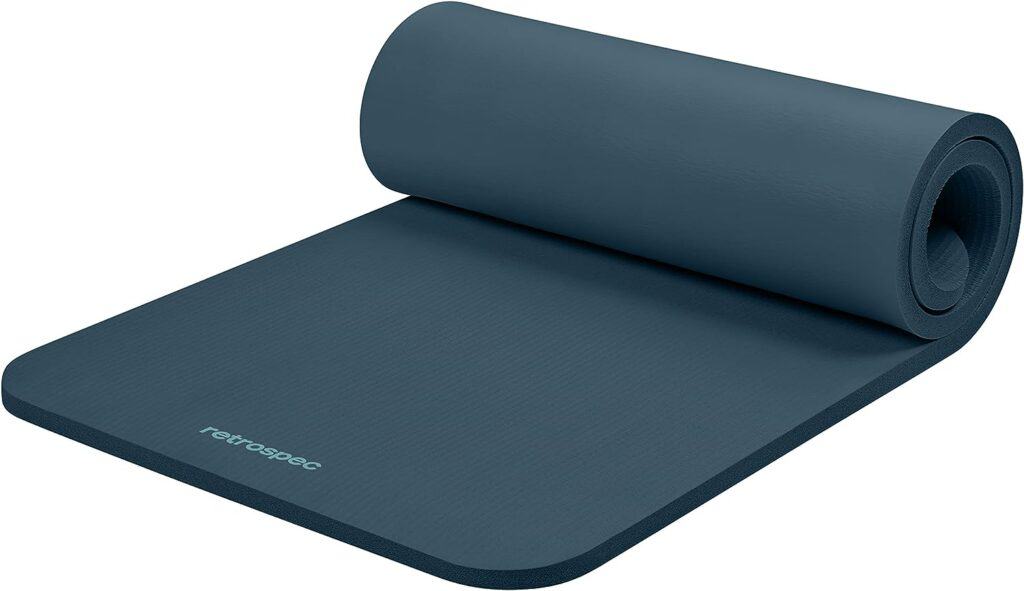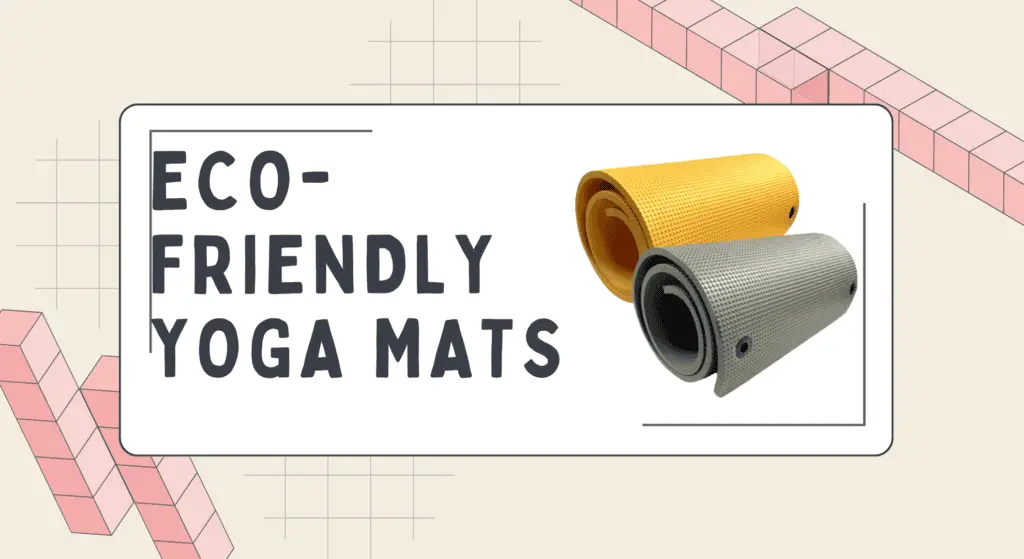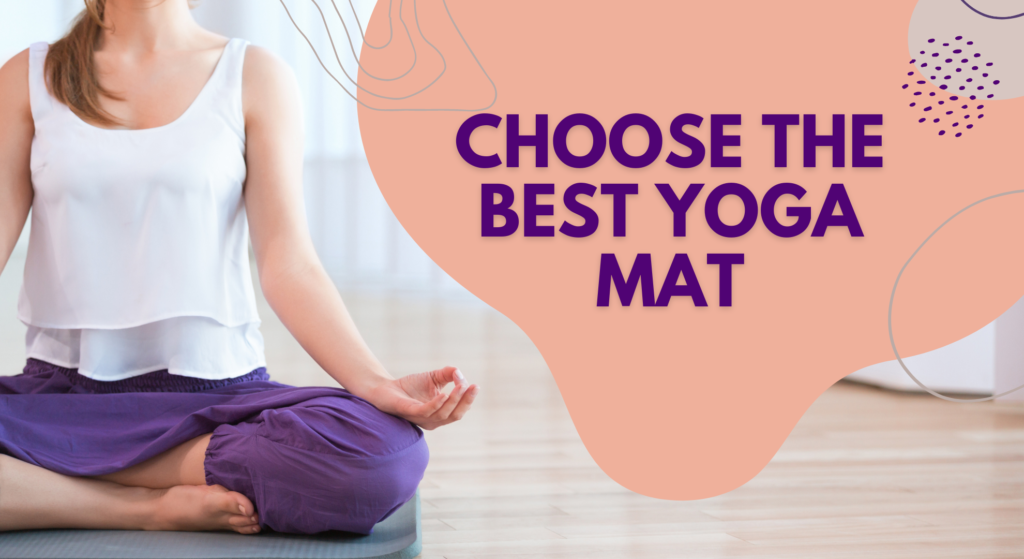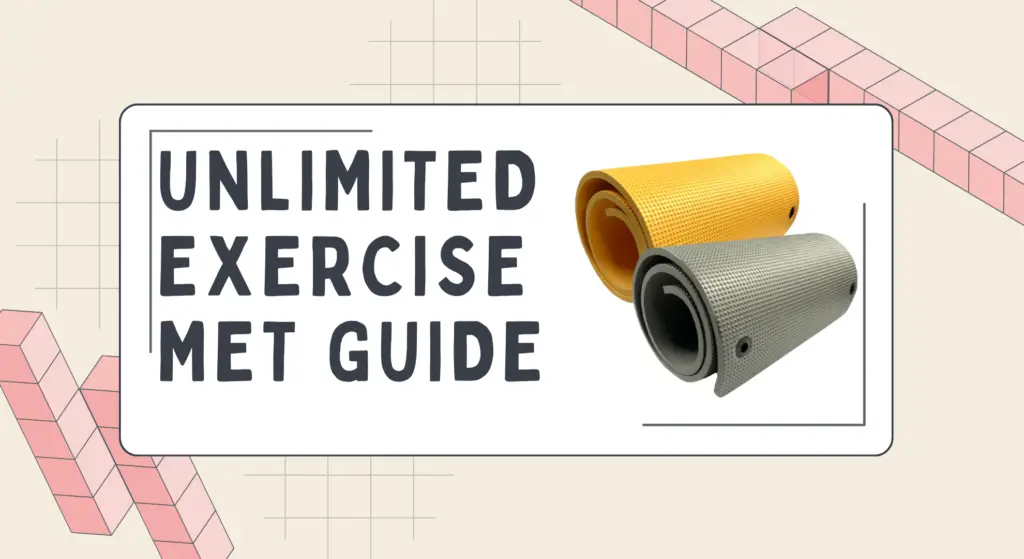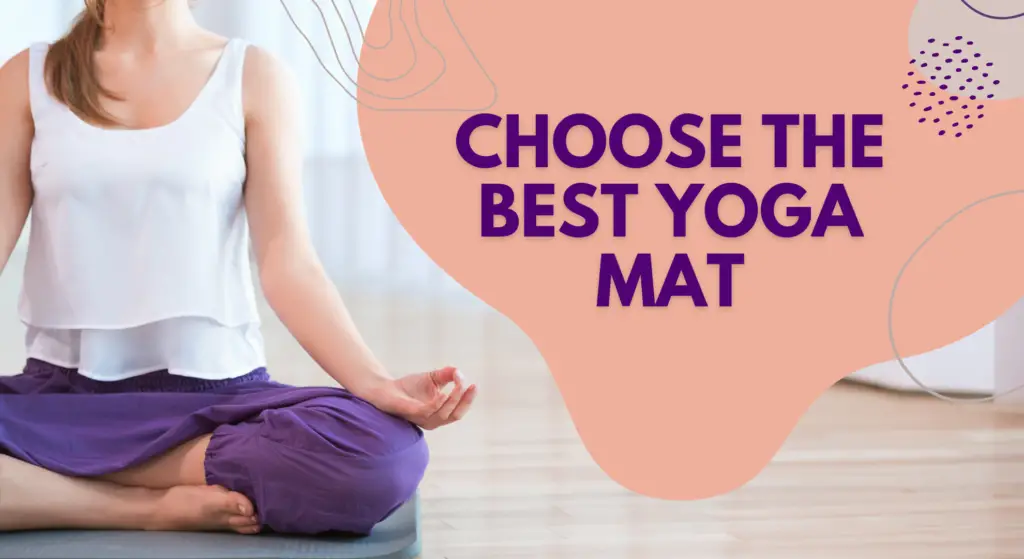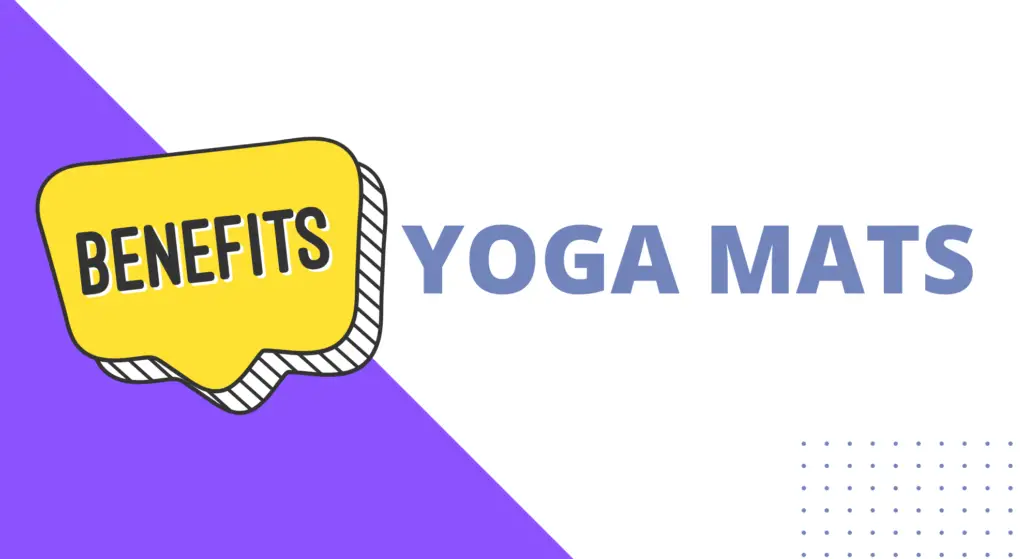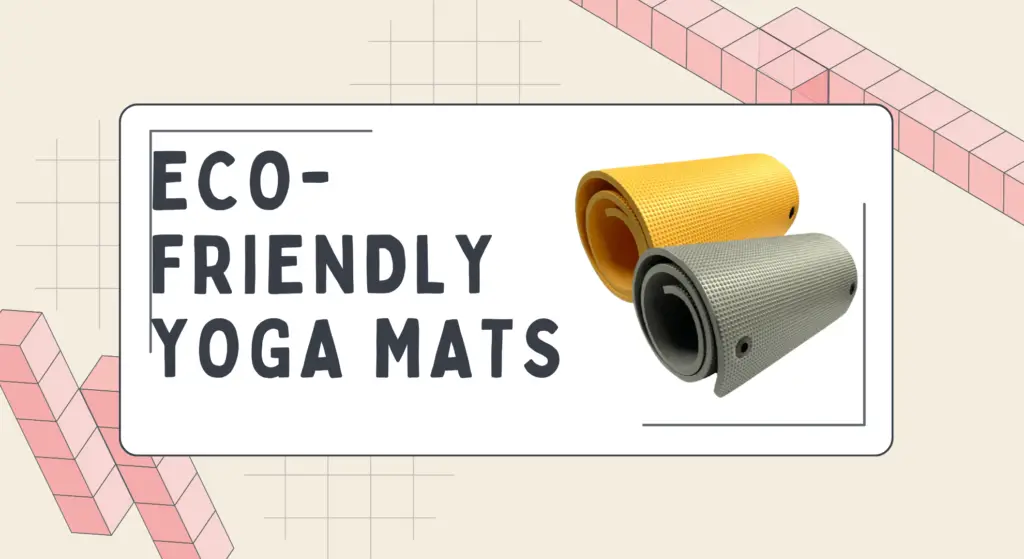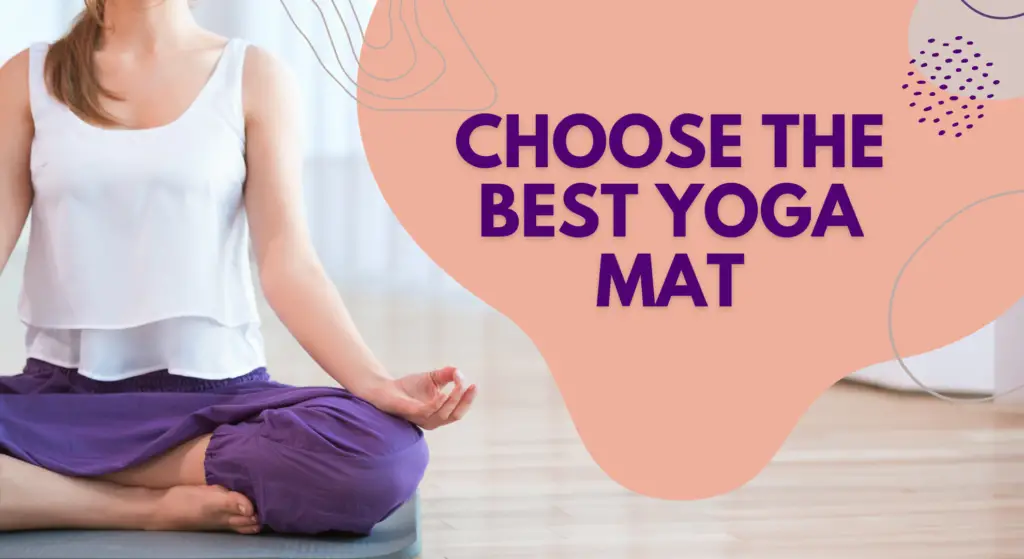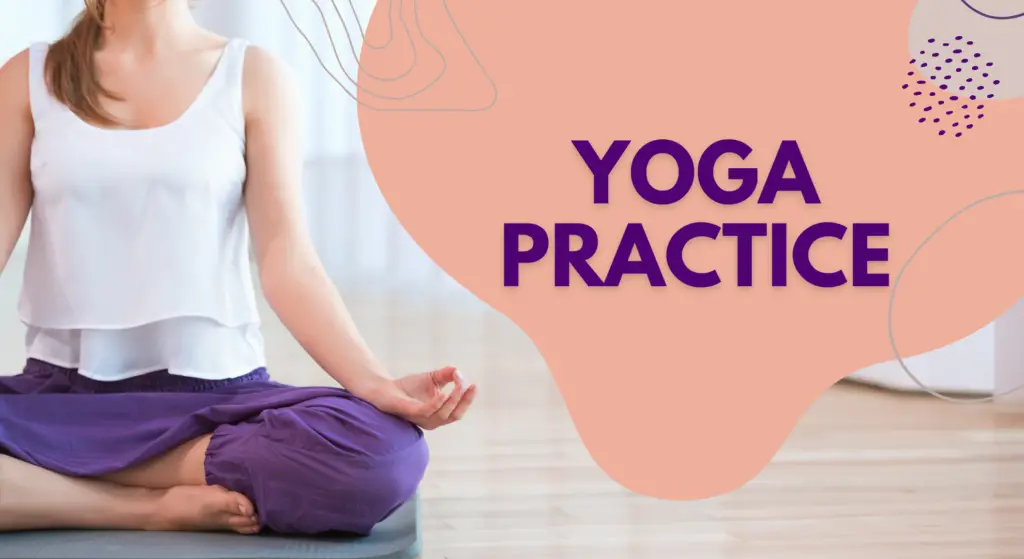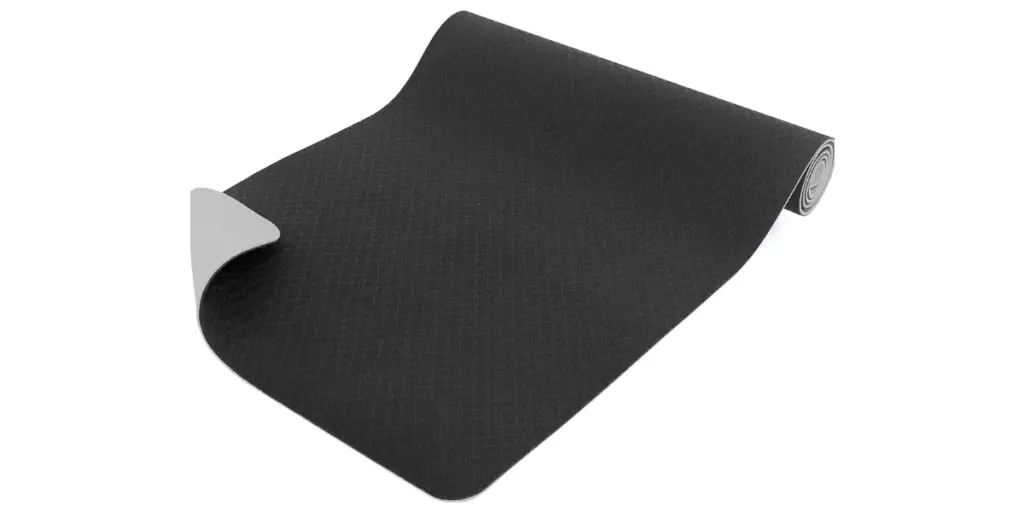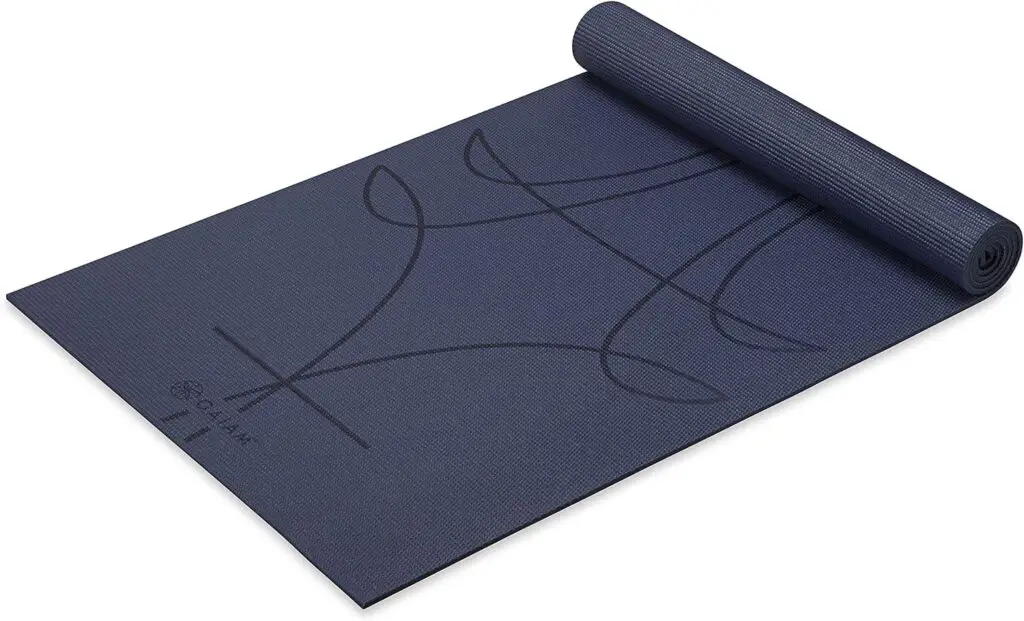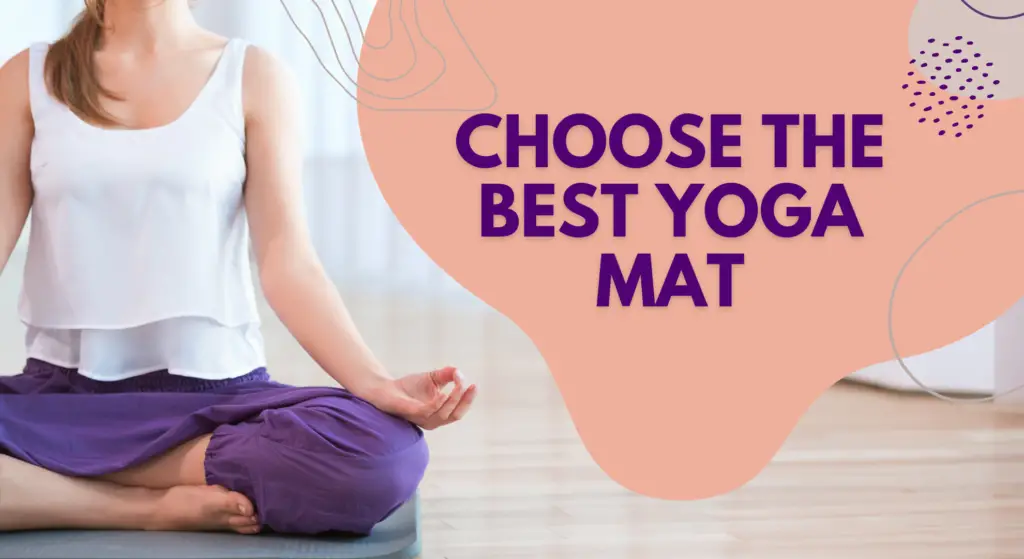As a yoga instructor for over 10 years who has tested countless mats, I always recommend students invest in a high-quality thick yoga mat rather than skimping on a thinner budget version. While a standard mat may suffice for more athletic pursuits like HIIT workouts, for the extensive floor work, kneeling, and balancing that comprise yoga flows, adequate cushioning, and padding are crucial to prevent strain and injury.
The standard thickness for a regular non-slip exercise mat is just 1/8 inch or 4mm, generally made from basic PVC or NBR materials. These provide minimal barrier against hard floors – fine for using an exercise bike but not for yoga joint protection. Premium thick mats measuring 1/4 inch (6mm) and above better absorb impact and refine balance with plush sturdiness during shifts of weight. This allows properly aligning wrists, knees, and ankles without discomfort seeping in over sessions.
This Comprehensive blog post will cover the under-discussed yet game-changing benefits of using a thick yoga mat for enhanced grip, durability, and most importantly, joint relief. I’ll compare high-quality contenders on material composition, density, size availability, and other essential metrics for identifying the best thick yoga mat for your individual wellness needs. Whether you have preexisting injuries or want to prevent them through low-impact exercise, let’s uncover how an ultra-thick mat can level up your practice.
Key Benefits of Using a Thick Yoga Mat
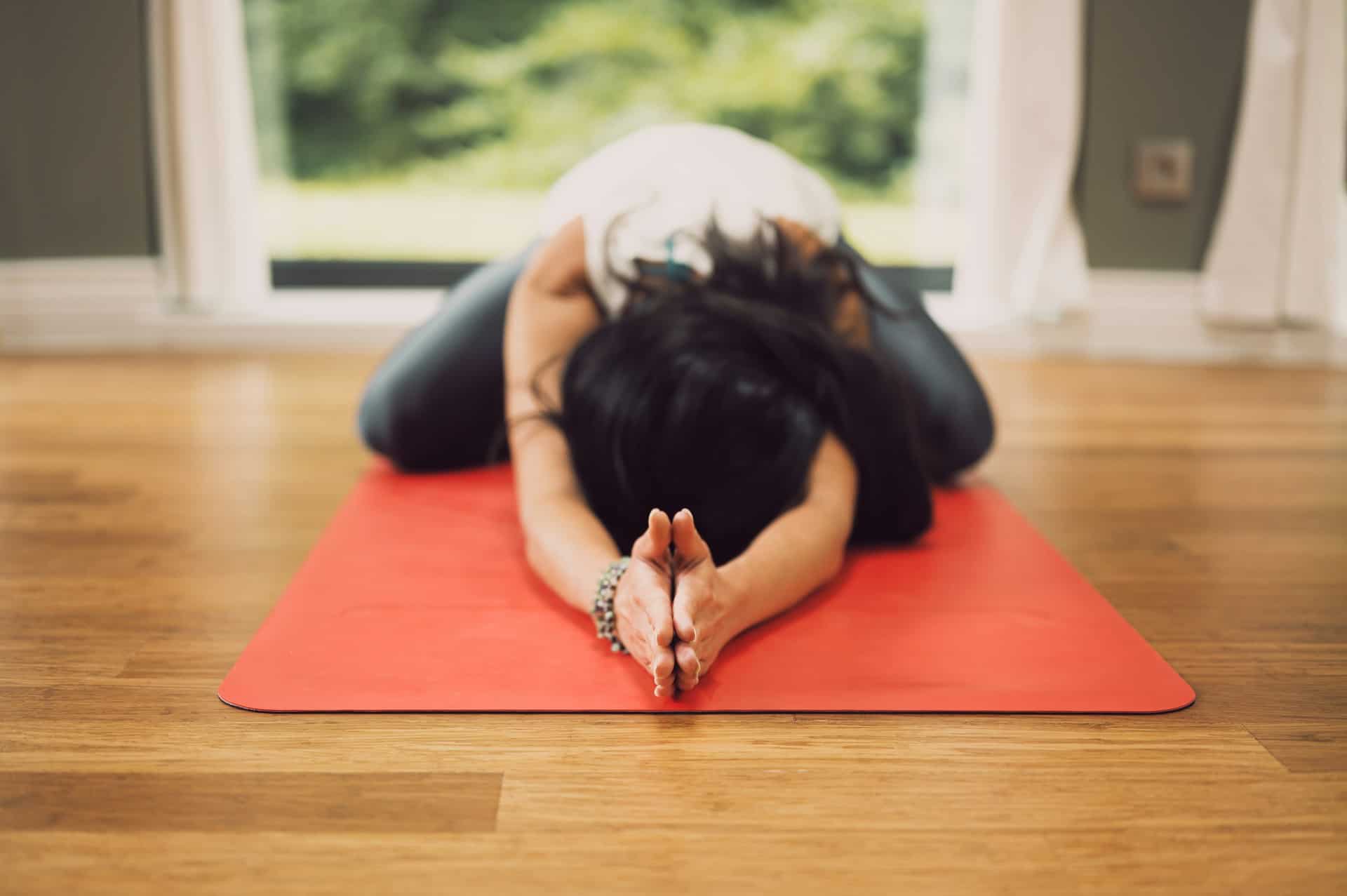
While a thin standard mat may seem perfectly suitable for more athletic applications like indoor cycling or HIIT training, yoga places greater demand on the mat to act as a veritable shield against hard flooring. Without adequate padding cushioning joints and spine, the risk of developing or aggravating pain and tightness over repeat sessions intensifies. Upgrading to a thick premium mat better equips you for yoga’s flexibility challenges through enhanced comfort, support, and stability:
More Cushioning for Sensitive Knees and Wrists
Kneeling postures like Child’s Pose are a foundational segment of yoga flows, allowing respite between standing sequences. The minimum 1/4 inch extra padding in a thick mat absorbs weight rather than transmitting blunt pressure onto kneecaps and delicate wrist joints. This prevents inflammation or bruising from thin mats, enabling working deeply into stretches without sharp discomfort. Those with preexisting arthritis or injuries find the plush surface comforting and protective.
Enhanced Grip and Traction for Balances
Beyond just thickness, high-quality thick yoga mats invest in durable materials with tacky textures that grip skin for more traction. The increased surface area stabilizes wobbles, allowing you to find your center and stand taller in one-legged postures like Tree Pose or Dancer’s Pose. New students often progress faster in balance elements with this confidence boost. The security also aids those managing injuries or stability limitations by providing a wider base of support underfoot.
Long-Term Durability Under Heavy Use
While cheaper thin mats tend to lose their springiness and flatten permanently after months of daily flows, the dense rubber or natural material composition in quality thick mats retains resilient padding for years. This saves you from continually replacing flimsy mats that degrade quickly with sweat and cleaning. Consider the thickness an investment in adequate joint protection through future rigorous practices. The Ultimate Guide to Types of Exercise Mats
Prevents Sliding on Slick Surfaces
Thicker mats inherently grip smooth hardwood or tile better by supplying more resistance when you shift weight. The bottom traction also tends to be stickier on premium versions, avoiding slides that could strain obliques and hips from overextending to catch yourself. The extra footing security again builds confidence for those regaining balance post-injuries or with mobility limitations. Your feet truly feel planted so you can find alignments that feel strongest in the body.
Allows Working Deeper Safely into Poses
Having ample dense support underneath with a thick mat gives peace of mind to gently push the range of motion deeper into hip and hamstring openers like Pigeon Pose or Triangle Pose. The joint traction and relaxation of tight areas can be achieved without compromising on padding for the knees. Athletes know recovery hinges on gradually developing flexibility and muscle elasticity this way.
Molds to Natural Spinal Curvature
Even perfectly healthy yogis will run into lower back soreness and stiffness from exercise overuse without adequate cushioning. Thin mats tend to create gaps between bony protrusions and the floor, causing stiffening of connective tissue. Quality thick mats contour gently to the curves of your spine as you move through backbends, reducing pinching sensations. This spinal alignment support assists in healthy mobility gains.
Thus a thick yoga mat topping 6mm with protective joint padding and grippy security promotes correct and safe technique as your increase demands on the body over years of consistent practice. The investment lessens the likelihood of abandoning your yoga journey from avoidable strains or repetitive impact discomfort. Let’s overview what metrics to examine when evaluating the best thick yoga mat options for your needs.
Discover Your Path: Before Read this article after you will move to next article
- The Complete Guide to Cleaning Yoga Mats
- 07 Best Affordable Exercise Mats for Home Gyms and Back Pain|
Factors To Consider When Selecting a Thick Yoga Mat:
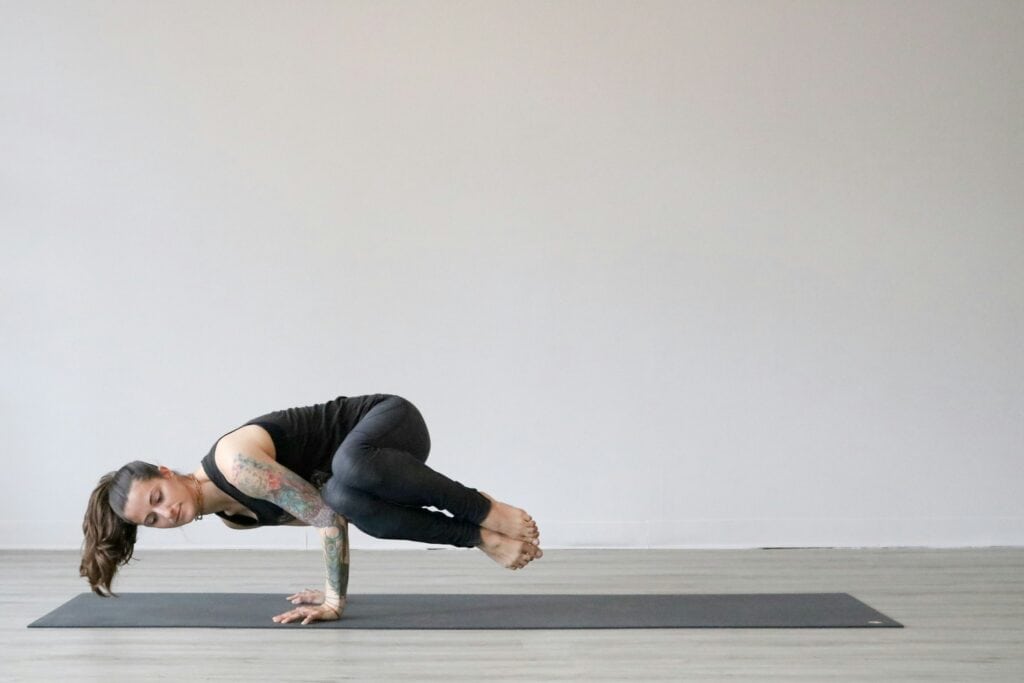
With the yoga gear market saturated with cheap imported mats lacking proper specifications for serious yogis, identifying quality takes some savviness. Mass retailers like Walmart or Amazon stock fitness mats that may claim extra thickness but disappoint in actual cushioning performance. Avoid wasting money on multiple options that compress or slide right away.
Here are key considerations I weigh as an instructor when finding durable thick mats suitable for students with sensitive joints, previous injuries seeking low-impact activity, or those new to yoga but hoping to progress long-term:
Minimum 1/4 Inch Thickness (6mm)
Any “thick” mat under 5mm fails to supply adequate reinforcement for bony areas on harder flooring. While 1/8 inch (4mm) pads suffice for pilates or bodyweight moves without kneeling, the gold standard for joint-friendly yoga mats hovers around 1/4 inch to 1/3 inch thickness. This minimum 6mm density sufficiently cushions during long holding periods in poses like Plank without bruising wrists.
Supportive Base materials like Natural Rubber or PER
Cheaper yoga mats tend to be composed of standard NBR or PVC materials which compress permanently or give off odors. More breathable, durable options free from latex allergens include natural tree rubber harvested eco-consciously or PER – PER-polyethylene reinforced with another polymer. These provide bouncy foam-like padding that lasts. They also grip better when humid versus going slippery.
Textured Surface for Traction
While a perfectly flat, smooth mat may seem ideal for easing sliding hands and feet during flows, they provide less stability for staying grounded in balance. Mats with strategically mapped textures, contours, and rubberizing offer needed traction. This also keeps the mat itself from shifting on smooth floors. The best grip builds confidence for beginners but also injury recovery.
Firm Yet Yielding Dense Foam Padding
The subjective element comes down to preferred cushioning feel – some yogis like an ultra-rigid 1/2 inch thick mat that feels like concrete, while others favor a little more give for a floating sensation in poses. Know that excessively soft thick mats diffuse proper joint alignment. Find a responsive middle ground that steadily supports positions through transitions.
Moisture Wicking Fabric Top Layer
Quality thick mats designed for more vigorous Vinyasa or Hot Yoga incorporate moisture-wicking microfiber upper layers to avoid pooled sweat slipping legs and hands. The fabric also allows better mat cleansing between uses. Cheaper versions turn oddly slick when damp. Invest in humidity management for the longest durability.
Eco-Friendly Materials and Production
Part of yoga philosophy entails living in better harmony with nature. Seek thick mat brands that source natural tree rubber ingredients over synthetic PVC versions laden with chemical plasticizers. They invest in carbon offset manufacturing too. Jade Yoga offers plant-based mats otherwise scarce in the niche.
Carrying Straps Included
Thicker yoga mats prove bulkier to transport to the studio or elsewhere without an attachable strap. Make sure any contenders on your list include durable carrying attachments for conveniently slinging over your shoulder on the go.
While striking the optimal balance across these facets feels complicated upfront, I’ve simplified the research process by test-driving all the highest-rated thick yoga mats suited for joint protection. Next, we’ll review my top recommendations and their pros and cons side-by-side.
Top 5 Thick Yoga Mats Comparison Table:
| Mat | Thickness | Material | Texture | Pros | Cons | Price |
| Liforme Yoga Mat | 5mm | Natural rubber + PER | UniqueALIGN grip with contour zones | Excellent cushioning; good traction for tricky balances | Expensive | Check |
| Jade Harmony | 3/4 inch | Natural tree rubber | Pebbled surface for traction | Plush sturdy padding; simple grippy texture | Heavier; needs breaking in | Check |
| Yogitoes Manduka eQua | 1/4 inch | 100% natural rubber | Towel fabric layer + grip nubs | Moisture wicking; built-in traction | Needs Yogitoes towel | Check |
| Manduka PROlite | 6mm | Premium dense PER | Fabricated texture | Standard trusted joint protection | Not the grippiest; needs breaking in | Check |
| Hugger Mugger Para Rubber | 1/4 inch | Natural sustainable rubber | Cross-hatched for traction + stability | Latex-free traction that grips from day 1 | Slight rubber smell when new | Check |
To summarize key differences:
Liforme offers unique gripping contours and zones aligned to hand and foot placements in poses but costs a premium.
Jade Harmony supplies plush 3/4 inch sturdy padding with simple pebbled traction but has some break-in period.
Yogitoes Manduka eQua combines a moisture-wicking towel layer with a nubbed rubber base for traction, requiring the two components.
Manduka PROlite has standard 6mm trusted joint protection but needs breaking in for optimal grip.
Finally, Hugger Mugger provides natural traction that grips instantly without residue but may have an initial rubber smell.
Having tested all these top-rated thick mats personally through years of hip opening practices and teaching flow classes, I can vouch for their quality and durability investments versus flimsier cheap options. Let’s dive deeper into my #1 overall recommendation based on cushioning, grip, longevity, and eco-friendly materials.
#1 Pick: Jade Harmony Yoga Mat 3/4″ Thickness
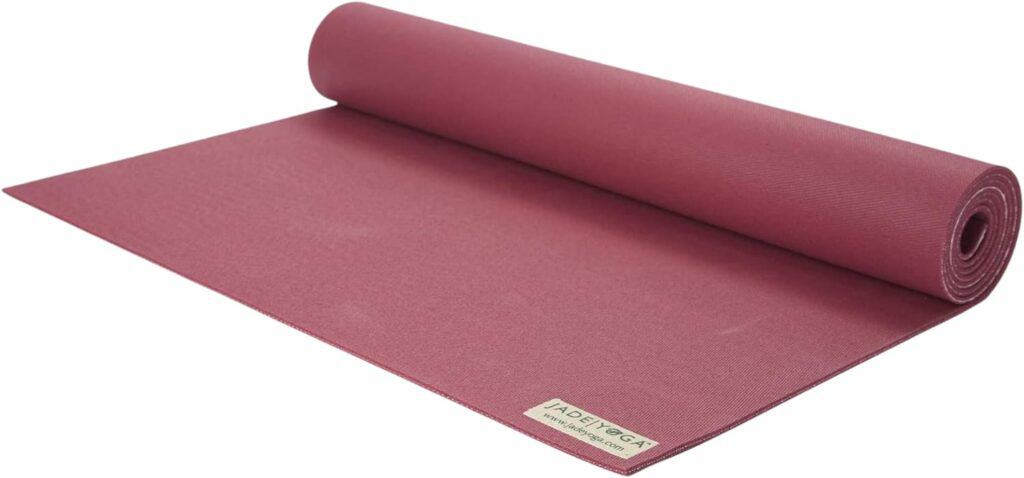
Claiming the crown for best-cushioned yoga mat is Jade Harmony‘s star pupil – the creatively named Jade Harmony Mat! As a longtime Jade yoga accessories devotee for their sustainability ethos and consistently exceptional quality, I stand by their original mat as suitably plush for bad knees yet grippy enough for advanced balances like Crow Pose.
Key Specs:
- 3/4 inch (19mm) ultra-thick padding
- Natural tree rubber construction with a grippy pebble texture
- Variety of length options from 68″-85″
- 4.76 lbs for excellent floor sticking
- Open-cell rubber doesn’t collect odors
What sets Jade Harmony apart beyond being award-winning pioneers in eco mat production is their uncompromising density. At a vast 3/4 inch thick, these mats provide uncompromising reinforcement for bony joint protection without sagging over years. The lush cushioning comforts aching wrists, knees, and hips through long holds in seated or prone poses. Yet the responsive springiness prevents sinking into the padding and diffusing alignment.
The bare rubber exposed has intrinsic stickiness for palms and soles, with a pebbled texture supplying just enough tactile traction for balances without proving too grippy during transitional movements through flows. I can barefoot downward dog without sliding inside the mat!
For taller yogis, the long 84″ version ensures adequate coverage for your whole frame without feet dangling off. They also sell an 8mm travel option that runs 72″ for transport.
Downsides are relatively few for such a beloved long-standing mat. The exclusive natural rubber does mean more weight to carry around at almost 5 lbs. And expect some initial sticker shock seeing the $80-100 price tag versus PVC brands – but this equates to a lifetime investment given Jade’s exceptional durability. Otherwise, a tiny minority may need to wear in the stiffness during an initial break-in period.
On the whole for joint-conscious students wanting optimal yoga mat thickness and traction, Jade Harmony is tried and true protection. I’ve practiced daily on my 84″ marine blue model for almost 3 years now with no issues, only replacing cheaper mats that wore out yearly before. The consistent quality and customer satisfaction keep them ranked best sellers year after year.
Beyond their industry-leading product, Jade further wins favor by buying back used mats for recycling while planting a tree for every mat purchased. The focus on sustainable materials like natural tree rubber tapped mindfully makes them a company aligned with yogic principles.
So for combination cushioning, grip, size flexibility, and eco-stewardship to treat the body and planet kindly, Jade Harmony leads the thick yoga mat category by example. We cover worthy runner-ups next.
Notable Thick Yoga Mat Alternatives
While Jade Harmony takes the crown as the overall highest quality thick yoga mat today, a few other specialty contenders deserve shoutouts for standout features depending on personal preferences and issues areas needing support. Here’s a brief rundown:
Manduka PROlite – This standard in commercial yoga studios worldwide offers 6mm density and midweight portability paired with a closed cell surface avoiding sweat absorption. The fabricated texture needs breaking in for traction with use which puts some off. But the overall firm, supportive quality for joint protection and alignment makes it a popular perimeter mat.
Hugger Mugger Para Rubber Mat – For an instantly grippy sticky yoga mat without residue, Hugger Mugger’s latex-free rubber alternative offers excellent traction from day one for all floors and feet thanks to the cross-hatched surface. At 1/4 inch thickness, it delivers padding for sore knees too. It does have more of a rubber smell initially.
YOGABODY Naturals – Those wanting maximum cushion and concaving to cradle back contours will appreciate YOGABODY’s 1/2-inch thick moldable mat. The supple texture lets you sink in for sensory joint traction while rebounding easily. It’s also longer at 72″ accommodating taller yogis. Just know it feels ultra plush.
Manduka Eko Superlite – Traveling yogis who want their joint-saving thickness easily packable meet their match with Manduka’s foldable Eko Superlite. Despite weighing just 2lbs, its layered foam construction supplies 1/4 inch cushioning. The ribbed bottom and dot traction grip respectably considering the transportability perk.
Final Takeaways on Choosing Ideal Thick Yoga Mats
As discussed throughout this comprehensive thick yoga mat review, upgrading your floor padding can make or break your yoga experience if living with injuries, joint pain, limited mobility or hoping to progress safely long term. While a standard thin 1/8″ (4mm) mat suits other home workouts, the extensive ground contact central to yoga makes proper knee, wrist, and spine support crucial.
Investing just $30 more dollars into a high-quality thick mat that cushions joints for thousands of hours use will transform your practice. Beyond experiencing all of yoga’s touted benefits from reduced stress to improved circulation without discomfort, you can expect tangible changes session over session. As your foundational strength, balance, and flexibility improve free from setbacks like strained wrists or bruised knees, your mind-body awareness awakens – the true goal of yoga!
Does this help explain the immense yet subtle advantage of using the best thick yoga mat to match your level? Let me know if you have any other questions on choosing what’s right for your needs!
Looking for the best affordable exercise mate on the market? Our team spent weeks researching and testing them, so you don’t have to
FAQ
The Ultimate Guide to Types of Exercise Mats, Learn more
Discover the ultimate and comprehensive guide to effectively cleaning and maintaining your beloved yoga mat, ensuring optimal hygiene and longevity. Dive into expert tips, step-by-step instructions, and recommended products to keep your yoga mat fresh, sanitized, and ready for your next invigorating practice session. Elevate your yoga experience with a clean and revitalized mat!
Discover the key differences between yoga mats and exercise mats, and find out which one suits your fitness needs best. Whether you’re a yoga enthusiast seeking the perfect grip and cushioning for your poses, or a fitness enthusiast in search of a durable mat for high-intensity workouts, understanding the nuances between these mats will help you make an informed decision. Explore the various materials, thickness levels, and specific features of each type to ensure optimal comfort, support, and stability during your exercise routine.
